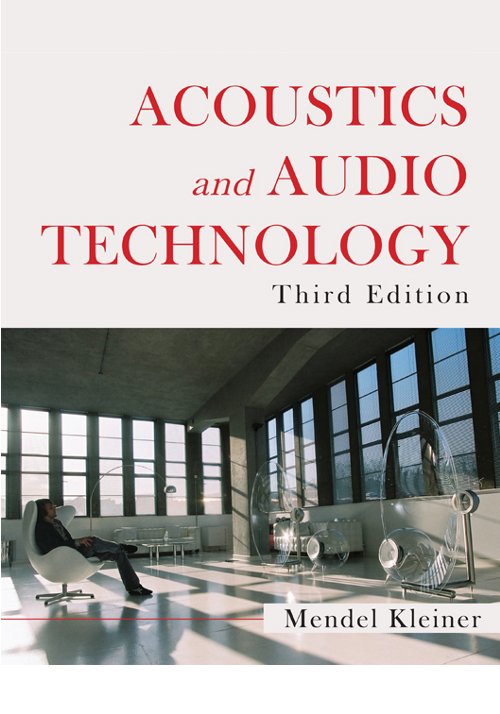Acoustics and Audio Technology, Third Edition
$59.95
A Title in J. Ross Publishing’s Acoustics: Information and Communication Series
By Mendel Kleiner
Softcover, 7.5 x 9.25, 480 pages
ISBN: 978-1-60427-052-5
September 2011
Description
Acoustics and Audio Technology, Third Edition, is an introductory text for students of sound and vibration as well as electrical and electronic engineering, civil and mechanical engineering, computer science, signals and systems, and engineering physics. A basic knowledge of basic engineering mathematics and physics is assumed. Problems are included at the end of the chapters and a solutions manual is available to instructors. This classroom-tested book covers the physical background to and mathematical treatment of sound propagation, the properties of human hearing, the generation and radiation of sound as well as noise control, and the technologies used for pickup, recording, and reproduction of sound in various environments, and much more.
Key Features
- Presents a basic short course on acoustics, fundamental equations, and sound propagation
- Discusses the principles of architectural acoustics, techniques for adjusting room acoustics, and various types of sound absorbers
- Offers an overview of the acoustical, mechanical, and electrical properties of loudspeakers and microphones, which are important transducers
- Provides an overview of the properties of hearing and voice
- Includes end-of-chapter problems and solutions available to instructors as WAV material
About the author(s)
Mendel Kleiner obtained his Ph.D. in architectural acoustics in 1978 and is currently Professor of Acoustics at Chalmers University of Technology, Gothenburg, Sweden, and in charge of the Chalmers Room Acoustics Group. Dr. Kleiner is responsible for teaching room acoustics, audio, electroacoustics, and ultrasonics in the Chalmers Master Program on Sound and Vibration. He has more than 50 publications, presented keynote lectures and more than 110 papers, has led courses at international conferences on acoustics and noise control, and organized an international conference on acoustics. His main research areas are computer simulation of room acoustics, electroacoustic reverberation enhancement systems, room acoustics of auditoria, sound and vibration measurement technology, product sound quality, and psychoacoustics. Dr. Kleiner is a Fellow of the Acoustical Society of America, the Chair for the Audio Engineering Society’s Technical Committee on Acoustics and Sound Reinforcement and on its Standards committee on Acoustics.
Table of Contents
Preface
Introduction
About the Author
List of Symbols
Chapter 1 Sound
1.1 Introduction
1.2 The Wave Equation
1.3 Solutions to the Wave Equation
1.4 Impedance
1.5 Sound Intensity
1.6 Sound Power
1.7 Propagation Losses
1.8 Reflection and Transmission at Boundaries
1.9 Acoustical Components and Circuits
1.10 Sound Propagation in Inhomogeneous Media
1.11 Dipoles and Quadrupoles
1.12 Problems
Chapter 2 Acoustic Signals
2.1 Spectra and Time History
2.2 Signals and the Jù-Method
2.3 Sine-Wave Signals
2.4 Noise
2.5 The Level Concept
2.6 Filters and Frequency Bands
2.7 Effective Value and Measurement Uncertainty
2.8 Reference Levels
2.9 Addition of Level Contributions
2.10 The Weighted Sound Pressure Level
2.11 Equivalent Level
2.12 Problems
Chapter 3 Hearing and Voice
3.1 Introduction
3.2 The Components of the Ear
3.3 The Dimensions of Hearing
3.4 Effects of Excessive Sound Exposure
3.5 Masking and Critical Bands
3.6 Distortion, Linearity, and Harmonics
3.7 Binaural Hearing
3.8 Voice and Speech
3.9 Problems
Chapter 4 Basic Room Acoustics
4.1 Introduction
4.2 Geometrical Room Acoustics
4.3 Statistical Room Acoustics
4.4 Wave Theoretical Approach
4.5 Problems
Chapter 5 Spatial Sound Perception
5.1 Introduction
5.2 Subjective Impression of Sound Field Components
5.3 Metrics for Room Acoustics
5.4 Problems
Chapter 6 Room Acoustics Planning and Design
6.1 Introduction
6.2 Basic Requirements for Good Room Acoustics
6.3 Fundamentals of Room Acoustic Planning
6.4 Tools for Prediction of Room Acoustic Response
6.5 Electronic Architecture
6.6 Auralization
6.7 Problems
Chapter 7 Absorbers, Reflectors, and Diffusers
7.1 Introduction
7.2 Absorption Coefficient
7.3 Porous Absorbers
7.4 Resonance Absorbers
7.5 Variable Absorbers
7.6 Audience Absorption
7.7 Reflectors
7.8 Barriers
7.9 Diffusers
7.10 Absorption Data Examples
7.11 Problems
Chapter 8 Waves in Solids and Plates
8.1 Introduction
8.2 Wave Types in Infinite Media
8.3 Wave Types in Media of Limited Extension
8.4 Structure Borne Sound in Lossy Sheets
8.5 Damping by Viscoelastic Layers
8.6 Damping by Sand and Other Lossy Materials
8.7 Problems
Chapter 9 Sound Radiation and Generation
9.1 Introduction
9.2 Common Metrics for Sound Radiation
9.3 Sound Radiation by Vibrating Surfaces
9.4 Sound Radiation by Vibrating Pistons and Membranes
9.5 Sound Radiation by Vibrating Sheets Carrying Bending Waves
9.6 Sound Generation by Flow
9.7 Problems
Chapter 10 Sound Isolation
10.1 Introduction
10.2 Insulation against Airborne Sound
10.3 Sound Transmission Loss
10.4 Sound Reduction Index
10.5 Transmission Loss of Single-Panel Partitions
10.6 Transmission Loss of Multiple-Panel Partitions
10.7 Composite Transmission Loss
10.8 Cracks and Other Leaks
10.9 Flanking Transmission
10.10 Balanced Spectrum Design
10.11 Insulation against Impact Sound
10.12 Insulation against Structure-Borne Sound
10.13 Problems
Chapter 11 Vibration Isolation
11.1 Introduction
11.2 Classical Vibration Isolation Theory
11.3 Impedance and Mobility
11.4 Some Metrics for Vibration Isolation
11.5 Linear Single-Degree-of-Freedom Systems
11.6 Vibration Isolation Theory Using Electromechanical Analogies
11.7 Real Systems
11.8 Problems
Chapter 12 Microphones
12.1 Introduction
12.2 Dynamic Range, Frequency Response, Noise, and Distortion
12.3 Sensitivity
12.4 Electroacoustical Conversion Principles
12.5 Sound Field Sensing Principles
12.6 Directivity
12.7 Diaphragm Mechanical Properties
12.8 Resistance Microphones
12.9 Piezoelectric Microphones
12.10 Capacitive Microphones
12.11 Electrodynamic Microphones
12.12 Super-Directional Microphones
12.13 Wind Noise
12.14 Problems
Chapter 13 Phonograph Systems
13.1 Introduction
13.2 Disc Cutting
13.3 The Playback System
13.4 Cartridges
13.5 Amplification
Chapter 14 Loudspeakers
14.1 Introduction
14.2 Radiation and Directivity
14.3 Efficiency
14.4 Frequency Response
14.5 Electrodynamic Drivers
14.6 Loudspeaker Enclosures
14.7 Horn Loudspeakers
14.8 Multiple Direct Radiator Loudspeaker Systems
14.9 Array Loudspeakers
14.10 Room Effects
14.11 Transient Response
14.12 Nonlinear Distortion
14.13 Electronic Compensation of Non-Linearities
14.14 Electrostatic Loudspeakers
14.15 Problems
Chapter 15 Headphones and Earphones
15.1 Introduction
15.2 Headphones/Earphones vs. Loudspeakers
15.3 The Acoustic Environment
15.4 Electromagnetic Headphones
15.5 Electrodynamic Headphones
15.6 Piezoelectric Headphones
15.7 Electrostatic Headphones
15.8 Noise-Canceling Headphones
15.9 Problems
Chapter 16 Digital Representation of Sound
16.1 Introduction
16.2 Sampling and Digitization
16.3 Quantization
16.4 Additional Problems in A/D and D/A Conversion
16.5 Codecs, Uniform and Nonuniform Quantization
16.6 Lossy Compression and Perceptual Coding
Chapter 17 Audio Systems
17.1 Introduction
17.2 Audio Channels and Listening Modes
17. 3 Monophonic and Monaural
17.4 Stereophony and Phantom Sources
17.5 Stereo Using Headphones
17.6 Binaural Sound Reproduction
17.7 Loudspeaker-Headphone Compatibility
17.8 Multichannel Sound Reproduction
17.9 Metrics for Audio Characteristics
17.10 Physical Audio Metrics
17.11 Noise Level and Signal-To-Noise Ratio
17.12 Amplitude Frequency Response
17.13 Phase Response and Group Delay
17.14 Nonlinear Distortions
17.15 Harmonic Distortion
17.16 Difference Frequency and Intermodulation Distortion
17.17 Multi-Tone Distortion Measurement
17.18 FM Distortion
17.19 Measurements Using Special Chambers
17.20 Impulse Response Analysis
17.21 Frequency Response, Spectrogram, and Wavelet Analysis
17.22 Directivity
17.23 Sensitivity
17.24 Compression
17.25 Impedance
17.26 Audio Sound Character and Quality
17.27 Listening Tests
17.28 Common Listening Test Types
17.29 Some Common Listening Tests
17.30 Selecting and Training of Listeners
17.31 Expert Panels
17.32 Planning and Preparation of a Listening Test
17.33 The Test Session
17.34 Information to Be Reported
17.35 Problems
References
Index
Reviews
“At last, an easy-to-read volume that has a real bent towards sound reproduction pre¬sented at both the technical and practical levels. Plus, each chapter has problem sets… Overall, a highly recommended book, particularly given its attractive price.”
—Neil Shade, President and Principal Consultant, Acoustical Design Collaborative, Ltd.,
Director of the Acoustics Program at the Peabody Institute of Johns Hopkins University,
From the NCAC Fall 2012 Newsletter
Related products
-
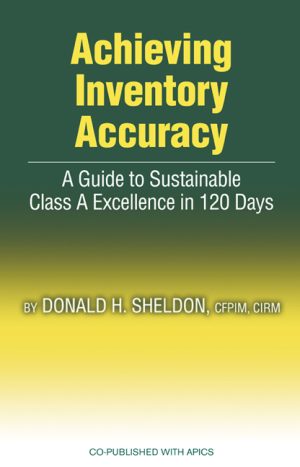
Achieving Inventory Accuracy
Retail Price: $49.95$44.95 Add to cart -

The EDGAR Online Guide to Decoding Financial Statements
Retail Price: $34.95$29.95 Add to cart -
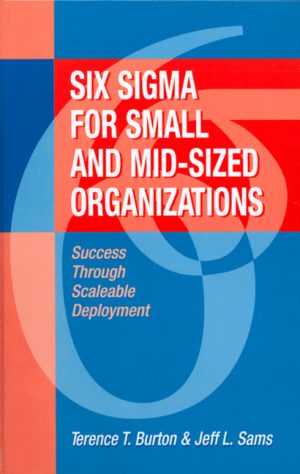
Six Sigma for Small and Mid-Sized Organizations
Retail Price: $49.95$44.95 Add to cart -
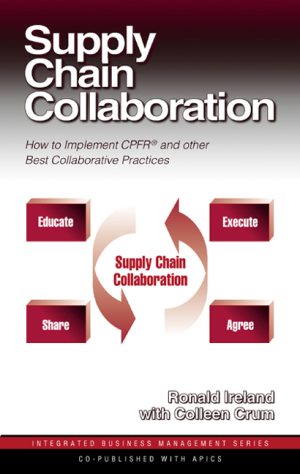
Supply Chain Collaboration
Retail Price: $54.95$49.95 Add to cart -
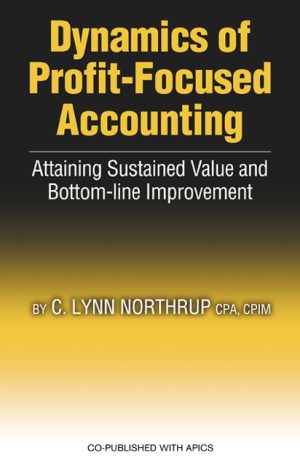
Dynamics of Profit-Focused Accounting
Retail Price: $54.95$44.95 Add to cart

